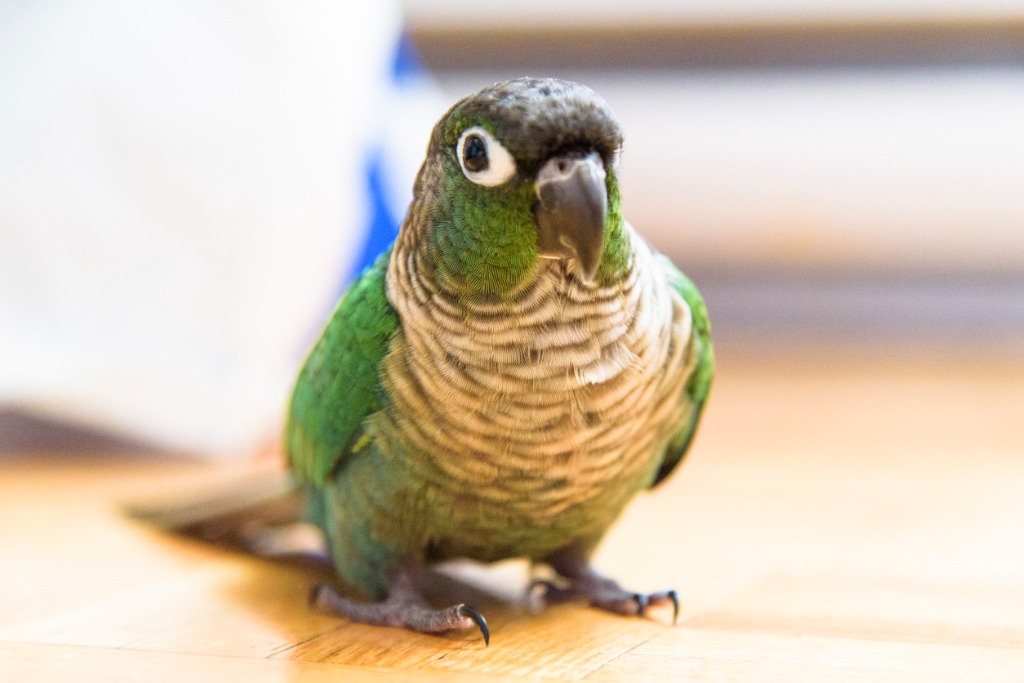Conures
Conures come in a variety of sizes and colors but are considered to be a medium to small size parrot. They are originally from Central and South America with some extinct species even being native to North America. These birds can be wonderful companions and there are many different species available in the pet trade. As with other species of birds, they require a lot of care.
Conures need a large cage with various perches at different levels. Perches should vary in diameter and texture. Natural wooden perches made of java or manzanita wood are ideal. These allow for less chance of abnormal wear and tear on the foot that could lead to problems like bumblefoot (pododermatitis). Toys are a necessity in the cage in order to keep a conure happy and stimulated in its home. Conures like to hide behind toys and enjoy cozying up in a fleece bird hut. It is important to supervise a bird when they have these types of sleeping huts to ensure they are not ingesting the fabric. Wooden, rope and paper toys make good choices for play items. Home-made toys from left over cardboard and paper can be appropriate as well.
Conures are no different from other psittacines and do require access to sunlight. The ultraviolet-B rays in sunshine allow a bird to make vitamin D3. This is then used to allow absorption of calcium from the diet. Calcium is needed for many functions in the body including building the skeleton, forming eggs, moving muscles, and maintaining normal neurologic function. Ultraviolet-B rays will not penetrate through a window, therefore getting your bird outside in the sun is the most effective way to provide this for your bird. A bird should be monitored closely while outdoors however to ensure it does not over heat or fly away. If you do not have a safe way to give your conure access to unfiltered sunshine, a safe alternative is to provide a lamp that emits ultraviolet-B, such as Zoomed's Avisun 5.0. These lights should be 12-18 inches from the bird and used for around 6 hours a day.
As with other species of psittacines, it is recommended that the majority of the diet be in the form of a pellet. Fresh vegetables, fruits and grains should make up the remainder. To learn more about general diet recommendations for psittacines click here. If you are switching your conure to a pellet diet and need some help please refer to our handout on tips for diet conversion here.

